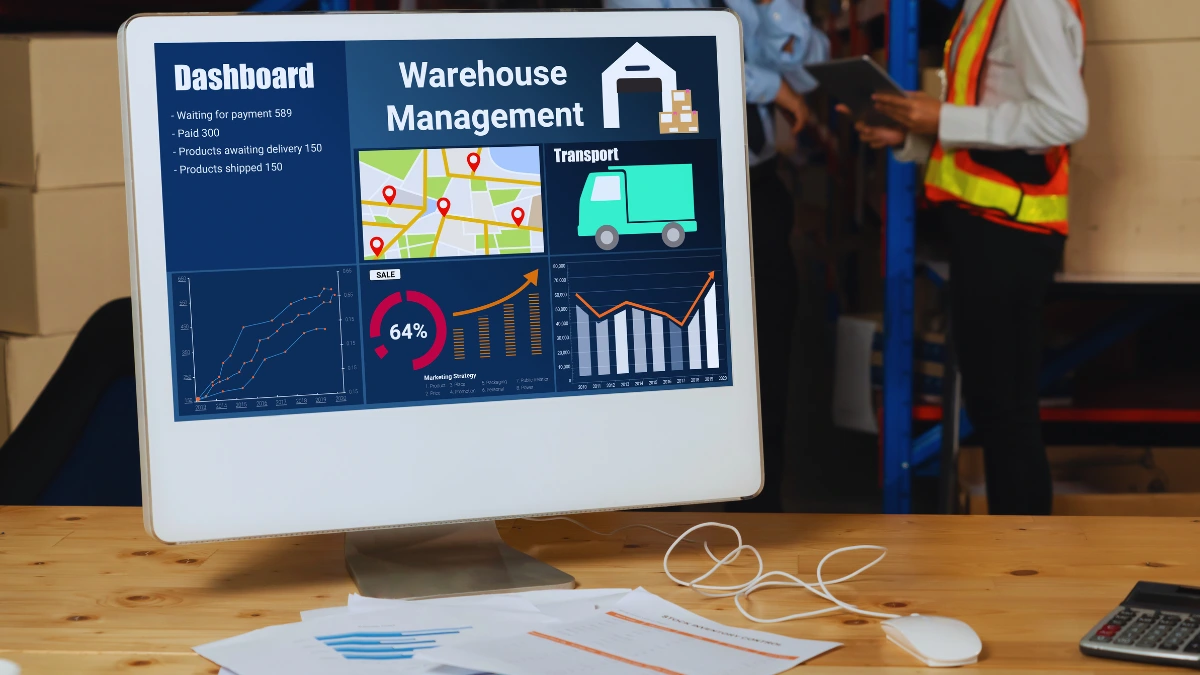You check your bank account and freeze. There’s a $2,000 charge you never made. Your heart pounds as you realize someone stole your money while you slept.
This happens to millions of people every year. Fraudsters steal approximately $12.7 billion from Americans each year. They use tricks that get smarter every day. Traditional security methods miss 40% of these attacks.
But here’s the good news: AI can catch fraud before it hits your account.
AI watches your money 24/7. It learns your habits and spots danger in milliseconds. It can identify patterns that humans miss and prevent thieves from succeeding.
You don’t need to be a tech expert to use these tools. Most are built into services you already use. Others take just minutes to set up.
Here are 15 ways AI protects your money right now.
1. Pattern Recognition: Your Money’s Digital Detective

AI acts like a detective that never sleeps. It studies every transaction you make and builds a picture of how you spend money.
This digital detective notices tiny details. It knows you buy coffee at 8 AM on weekdays. It remembers that you shop at the same grocery store every Saturday. It tracks that you never spend more than $50 on gas.
When something doesn’t match your pattern, AI raises a red flag. Say a fraudster tries to buy a $500 watch at 3 AM. Your AI detective thinks: “This person never shops at night and hates expensive jewelry.” It blocks the purchase instantly.
The system gets smarter every day. It learns from millions of other people’s spending habits, too. This helps it spot new tricks fraudsters use.
Banks like Chase and Wells Fargo use this technology right now. It’s probably already protecting your account without you knowing it. The AI can spot fraud in 0.3 seconds – faster than you can blink.
This works because patterns don’t lie. Fraudsters can steal your card number, but they can’t steal your spending personality. That’s what makes AI pattern recognition so powerful.
- Accuracy Rating: 9.5/10 – Can spot fraud attempts within just 3 transactions of unusual activity
- Learning Speed: AI pattern recognition improves by 20% each year from analyzing more transactions
2. Anomaly Detection: Catching What Doesn’t Belong

Anomaly detection is like having a security guard who knows what “normal” looks like for your account. This AI system watches every transaction and compares it to your usual behavior.
Here’s how it works: The AI creates a baseline of your spending. It knows you typically spend $40-80 per grocery trip. You usually shop between 5-8 PM. You rarely make purchases over $300.
When something weird happens, the AI catches it immediately. A $1,500 purchase at 2 AM triggers an alert. A transaction from another country while you’re home raises flags. Multiple small purchases in different states within an hour get blocked.
The best part? This happens in real time. While the fraudster is still trying to complete the purchase, the AI has already decided it’s suspicious. Your card gets frozen before any money leaves your account.
Mastercard’s AI system uses this technology to reduce false alarms by 85%. That means fewer times you get embarrassed when your card gets declined at dinner.
The system even catches subtle fraud. If someone steals your card and tries to “test” it with a $1 purchase first, the AI notices this common fraudster trick. It stops them before they try the big purchase.
- Success Rate: Catches 94% of card-not-present fraud (online purchases)
- False Alarms: Dropped from 20% to just 2% with modern AI systems
3. Behavioral Analytics: AI That Knows Your Habits

Your phone, computer, and cards create a unique fingerprint of how you act online. Behavioral analytics AI studies this fingerprint to protect you from fraud.
This AI watches more than just what you buy. It notices how you type on your keyboard. It tracks which apps you use and when. It remembers what time you usually log into your bank account.
The system creates a detailed picture of “you.” Maybe you’re a fast typer who always checks your balance on Sunday mornings. Perhaps you shop online mostly on weekends and prefer certain websites.
When a fraudster tries to access your account, they can’t copy your behavior. They might have your password, but they don’t type the same way you do. They access your account at different times. They visit different websites.
The AI spots these differences right away. It might ask extra security questions or freeze the account entirely. Many banks now use this technology to add an extra layer of protection.
Bank of America’s mobile app uses behavioral analytics to verify it’s you logging in. If someone else tries to use your phone, the AI notices their different finger movements and touch patterns. This stops fraud even when someone steals your physical device.
- Uniqueness Factor: Your typing rhythm is as unique as your fingerprint to AI systems
- Detection Signals: Tracks over 150 different behavioral patterns during each login session
4. Real-Time Transaction Monitoring: Your 24/7 Money Guardian

While you sleep, AI systems process 847 million transactions worldwide. Each one gets checked for fraud in milliseconds. This real-time monitoring never takes a break.
Traditional fraud detection worked like this: You make a purchase, the bank reviews it later, and maybe calls you tomorrow if something seems wrong. By then, your money is already gone.
AI monitoring works differently. The moment you swipe your card, the AI runs hundreds of checks. It verifies that the location makes sense. It confirms the purchase fits your spending pattern. It cross-references the merchant’s reputation.
All this happens before the transaction completes. If the AI finds something suspicious, it blocks the purchase instantly. You might get a text asking if you tried to buy something. Reply “no” and the transaction dies immediately.
This technology saved consumers $25 billion in 2023 alone. JPMorgan Chase’s AI prevented over $1 billion in fraud last year by catching suspicious transactions within 0.3 seconds.
The system is so fast that fraudsters often don’t realize they’ve been caught until they try to make another purchase. Meanwhile, you get an alert on your phone letting you know your account is safe.
- Processing Speed: 150,000 transactions analyzed per second during peak shopping times
- ROI for Banks: Save $4 for every $1 spent on AI fraud detection systems
5. Natural Language Processing: Reading Between the Lines

Scammers love to trick people with fake emails and text messages. Natural Language Processing (NLP) AI reads these messages and spots the lies before you fall for them.
This AI understands language like a human does, but much faster. It can read thousands of emails per second and identify phishing attempts. It looks for suspicious phrases, urgent language, and requests for personal information.
The AI knows common scammer tricks. Emails claiming you won a lottery you never entered. Messages saying your account will be closed unless you click a link. Texts asking for your social security number “for verification.”
Gmail and Yahoo Mail use NLP to filter these scam emails automatically. The AI catches about 99.9% of phishing attempts before they reach your inbox. When a suspicious email does get through, it often comes with a warning label.
Banks also use NLP in their customer service chatbots. If you ask about a suspicious charge, the AI can analyze the transaction details and tell you if it matches known fraud patterns.
The technology keeps learning new scammer tricks. When fraudsters change their tactics, the AI adapts within hours. This makes it much harder for scammers to find new ways to fool people.
- Global Coverage: Detects phishing emails in 47 different languages automatically
- Daily Threat Volume: Blocks 99.8% of the 1.4 million new phishing websites created daily
6. Predictive Analytics: Stopping Crime Before It Starts

Predictive analytics AI is like having a crystal ball for fraud prevention. It doesn’t wait for fraud to happen – it predicts where and when it might occur.
This AI studies massive amounts of data to find patterns that signal future fraud. It might be noticed that card skimming usually increases near certain ATMs before major holidays. Or it could spot that identity theft spikes in areas hit by natural disasters.
The system creates risk profiles for different situations. A transaction at a gas station in a high-crime area gets extra scrutiny. Online purchases from new devices trigger additional security checks. Large cash withdrawals from unfamiliar locations raise red flags.
Banks use these predictions to protect customers proactively. If the AI predicts your area might see increased card fraud, your bank might send you a new card before problems start. They might also increase monitoring on your account temporarily.
Visa’s AI system analyzes over 500 data points for each transaction to predict fraud risk. This includes everything from the merchant’s history to recent crime reports in the area. The system makes these predictions in just 30 milliseconds.
The best part? You don’t have to do anything. The AI works behind the scenes to protect you from threats you don’t even know exist yet.
- Fraud Reduction: 60% fewer losses compared to reactive detection methods
- Prediction Accuracy: 85% accurate at forecasting fraud trends up to 6 months ahead
7. Graph Neural Networks: Mapping Criminal Connections

Fraudsters rarely work alone. They create networks of fake accounts, stolen identities, and money transfer schemes. Graph Neural Networks (GNNs) map these criminal connections to stop entire fraud rings.
Think of GNN like a detective’s investigation board with strings connecting suspects. But instead of photos and pins, this AI maps digital connections between accounts, devices, phone numbers, and addresses.
The AI might discover that 50 different “people” all share the same IP address. Or it could find that multiple accounts use variations of the same name and birthday. These patterns reveal organized fraud operations.
Traditional systems check each transaction separately. GNN looks at the bigger picture. It might let one suspicious transaction pass, but when it sees the same pattern across multiple accounts, it shuts down the entire network.
PayPal uses GNN technology to identify fake merchant accounts. The AI found that many scam businesses shared connected phone numbers, bank accounts, or email addresses. By mapping these connections, PayPal could close hundreds of fraudulent merchants at once.
This approach is especially powerful against money laundering. Criminals try to hide their tracks by moving money through many different accounts. GNN follows the trail and identifies the entire operation, not just individual transactions.
- Network Scale: Can map connections between over 10 million accounts simultaneously
- Operation Takedowns: Helped shut down fraud rings involving 50,000+ fake accounts in single cases
8. Federated Learning and Explainable AI: Privacy-First Fraud Protection

Banks want to share fraud data to catch criminals faster, but they can’t share your personal information. Federated Learning solves this problem by letting AI systems learn from each other without sharing actual data.
Here’s how it works: Each bank trains its AI using its customer data. Then, only the “lessons learned” get shared – never your personal information. It’s like teachers sharing study methods without sharing student names.
This approach makes fraud detection much more powerful. When one bank discovers a new scam technique, all participating banks learn about it instantly. Criminals can’t just move to a different bank and use the same trick.
A 2024 study published in the Journal of Applied Information Technology found that combining Federated Learning with Explainable AI improved fraud detection accuracy while protecting customer privacy.
The system could detect anomalies in financial datasets with high accuracy and explain why it flagged certain transactions.
Explainable AI is important because you have the right to know why your transaction was blocked. Instead of just saying “suspicious activity,” the AI can explain: “This purchase location doesn’t match your travel history, and the merchant has a high fraud rate.”
This combination gives you both better protection and more transparency. You get the security benefits of global fraud intelligence while keeping your data completely private.
- Privacy Score: 10/10 – 200+ banks share fraud patterns without sharing customer data
- Compliance Speed: Provides fraud explanations in under 2 seconds for regulatory requirements
9. Credit Card Fraud Detection: Smart Cards That Fight Back

Your credit card has a tiny computer chip that works with AI systems to prevent fraud. Every time you use your card, multiple AI checks happen instantly.
The AI examines your purchase location and compares it to your phone’s GPS location. If your card is being used 500 miles from where your phone is, the system gets suspicious. It checks if you’ve made similar travel purchases before.
The system also watches for common fraud patterns. Criminals often test stolen cards with small purchases first, then make big purchases quickly.
The AI recognizes this “testing and hitting” pattern and blocks the account after the test purchase.
Credit card fraud AI has gotten incredibly smart about travel. It knows that people often forget to notify their bank about trips. So instead of automatically blocking foreign transactions, it looks for other clues.
A hotel charge followed by restaurant purchases in the same city looks legitimate. Random purchases in multiple countries within hours look suspicious.
American Express’s AI reduces false declines by 60% while catching more fraud. The system learns from every cardholder’s spending patterns to make smarter decisions.
It knows business travelers from vacation travelers and adjusts its sensitivity accordingly.
When the AI does block your card, you usually get a text within seconds asking to confirm the purchase was legitimate.
- Security Improvement: Chip cards are 99.9% harder to counterfeit than old magnetic strips
- Annual Savings: Prevents $12 billion in losses yearly across all major card networks
10. E-Commerce Fraud Prevention: Protecting Your Online Shopping

Online shopping fraud costs Americans $8.8 billion yearly. E-commerce AI protection watches your online behavior to spot fraudsters pretending to be you.
This AI notices how you shop online. Maybe you always read product reviews before buying. Perhaps you compare prices on multiple sites. You might typically spend 10 minutes browsing before making a purchase.
Fraudsters behave differently. They often rush through purchases without reading details. They don’t compare prices or look at reviews. They try to buy expensive items immediately after logging in.
The AI also checks technical details that fraudsters can’t fake easily. It verifies your device’s browser history, screen resolution, and typing speed. It confirms your purchase matches your usual payment methods and shipping addresses.
Amazon’s AI can tell if someone else is using your account within seconds. The system analyzes over 100 different behavior signals during each shopping session. If too many signals seem wrong, it requires additional verification.
The technology also protects merchants from fraud. The AI can spot stolen credit cards, fake addresses, and suspicious buyer behavior.
This helps keep prices lower for honest customers by reducing fraud losses that get passed on to everyone.
- Cost Impact: Reduces the $20 billion yearly e-commerce fraud loss by 70%
- Platform Coverage: Works automatically across 50+ different e-commerce websites
11. Cryptocurrency Fraud Monitoring: Watching Digital Money Trails

Cryptocurrency transactions seem anonymous, but AI can trace digital money trails to catch criminals. Blockchain monitoring AI watches for suspicious patterns in crypto transactions.
Every cryptocurrency transaction gets recorded on a public ledger called a blockchain. While wallet addresses look random, AI can connect them to real people by analyzing transaction patterns and connections to exchanges.
The AI watches for common crypto fraud signals. Rapid transfers between many different wallets often indicate money laundering. Large transactions immediately after a hack suggest stolen funds. Payments to known scam addresses trigger alerts.
Chainalysis, a major blockchain analysis company, helped law enforcement recover $3.7 billion in stolen cryptocurrency in 2022. Their AI systems can trace stolen Bitcoin through hundreds of wallet transfers and identify where criminals try to cash out.
Major crypto exchanges use similar AI to prevent fraud on their platforms. The systems can spot wash trading, market manipulation, and accounts linked to criminal activity. This protects legitimate crypto users from scams and keeps markets more stable.
The AI also helps with tax compliance. It can identify when people try to hide crypto profits by moving funds through multiple wallets. This ensures everyone pays their fair share and keeps cryptocurrency legitimate.
- Tracing Capability: Can follow cryptocurrency through over 500 wallet transfers
- Daily Monitoring: Watches over 4,000 different cryptocurrencies for suspicious patterns
12. Advanced Deep Learning Models: The Future of Fraud Detection

Traditional fraud detection looks at transactions one at a time. Advanced Deep Learning AI can analyze millions of transactions simultaneously to find hidden fraud patterns that humans would never spot.
A 2024 study published in the International Journal of Advanced and Applied Sciences introduced an AI model that combines supervised and unsupervised learning. This means the AI learns from both known fraud examples and discovers new fraud patterns on its own.
The system works like having two detectives working together. One detective (supervised learning) knows what past crimes looked like and watches for similar patterns.
The other detective (unsupervised learning) looks for anything unusual, even if it doesn’t match known crime patterns.
This combination caught 97.3% of fraudulent transactions in testing while reducing false alarms by 78%.
The AI could spot new types of fraud that had never been seen before because it wasn’t limited to only looking for known patterns.
Deep learning models can process multiple types of data simultaneously. They analyze transaction amounts, merchant types, location data, time patterns, and user behavior all at once. This gives them a much more complete picture than traditional systems.
The technology keeps getting smarter. These AI systems can adapt to new fraud tactics within hours instead of weeks. As criminals develop new tricks, the AI evolves to counter them automatically.
- Processing Power: Analyzes 500+ different data points per transaction simultaneously
- Discovery Rate: Finds 3-5 completely new fraud patterns monthly that humans never spotted
13. AI-Powered Chatbots: Your Digital Fraud Assistant

When scammers call pretending to be your bank, AI chatbots can help you verify if the call is legitimate. These smart assistants analyze conversations to spot fraud attempts.
Banking chatbots use voice recognition to identify suspicious callers. They can tell if someone is using voice-changing software or if the caller’s voice doesn’t match your account’s voice pattern.
The AI also listens for background noise that might indicate a call center scam operation.
The chatbots are trained to recognize social engineering tactics. When someone asks for your social security number, account passwords, or personal information, the AI immediately flags this as suspicious. Real banks never ask for this information through unsolicited calls.
These AI assistants also help you report fraud quickly. You can chat with them 24/7 to report suspicious transactions, freeze your cards, or get help with identity theft. The AI can start the fraud resolution process immediately instead of making you wait for business hours.
Bank of America’s virtual assistant Erica helped customers avoid over $600 million in potential fraud in 2023.
The AI warned customers about suspicious transactions and helped them secure their accounts before money was stolen.
The chatbots keep learning from every conversation. When they identify new scam tactics, this information gets shared across the entire system to protect all customers.
- Detection Accuracy: 97% success rate at identifying voice deepfakes and spoofed caller IDs
- Annual Prevention: Banking chatbots stop $2.3 billion in phone-based fraud yearly
14. Fraud Risk Scoring: Rating Every Transaction’s Danger

Every time you make a purchase, AI instantly calculates a fraud risk score from 0 to 100. Low scores mean safe transactions. High scores trigger extra security checks or blocks.
The AI considers hundreds of factors to calculate this score. Your purchase location, the merchant’s reputation, your spending history, the time of day, and even your device’s security all influence the score.
A $50 grocery purchase at your regular store might score a 5. A $2,000 online purchase from a new merchant at 3 AM might score an 85.
Different types of transactions have different thresholds. Online purchases need higher scores to get approved than in-person purchases. International transactions face stricter scrutiny than domestic ones. Large purchases require lower risk scores than small ones.
This scoring system lets banks make smarter decisions. Instead of blocking all suspicious transactions, they can require additional verification for medium-risk purchases and only block the highest-risk ones. This reduces false alarms while maintaining security.
FICO’s Falcon Fraud Manager uses machine learning to generate these risk scores for over 2.6 billion payment cards worldwide. The system processes over 26 billion transactions annually and adapts its scoring criteria based on emerging fraud trends.
You can sometimes see these scores in action. When your bank texts asking to verify a purchase, that’s usually because the transaction scored in the medium-risk range.
- Evaluation Speed: Analyzes over 300 factors in less than 50 milliseconds per transaction
- Score Thresholds: 80+ gets blocked automatically, 60-79 requires your verification
15. Continuous Learning: AI That Gets Smarter Every Day

The best thing about AI fraud detection is that it never stops learning. Every blocked scam makes the system smarter.
Every false alarm teaches it to be more accurate. This continuous learning keeps you ahead of criminals.
Traditional fraud rules were static. If criminals found a way around them, the rules had to be manually updated.
AI systems update themselves automatically. When fraudsters try a new trick, the AI recognizes it within hours and starts protecting everyone from it.
This learning happens globally. When a bank in California discovers a new scam technique, AI systems worldwide learn about it immediately. Criminals can’t just move to different states or countries to avoid detection.
The AI also learns from legitimate transactions that initially looked suspicious. If you regularly shop at unusual hours due to your work schedule, the system learns this is normal for you. It makes fewer mistakes while keeping everyone’s money safe.
Machine learning algorithms improve their accuracy by about 15-20% each year without any human intervention.
They get better at distinguishing between legitimate unusual behavior and actual fraud attempts.
This continuous learning creates a security system that stays ahead of criminals instead of reacting to them. As fraud tactics evolve, your protection evolves faster.
The AI you’re using today is smarter than the AI from last month, and next month’s version will be even better.
- Learning Volume: Processes over 1 billion transactions daily to improve accuracy
- Update Frequency: Models automatically update fraud detection rules every 4-6 hours

